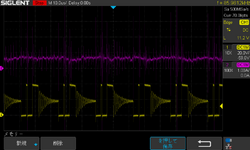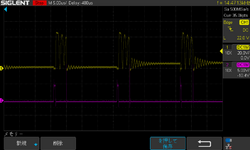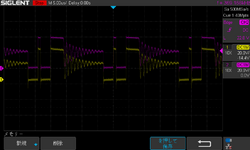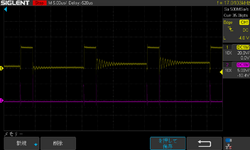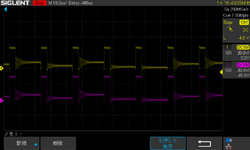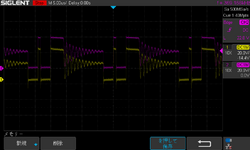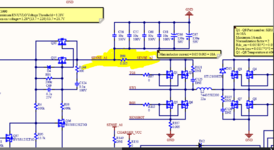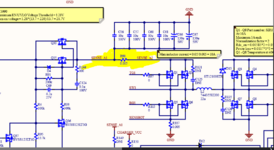hoi
Newbie level 5
Hi everyone,
I am making a battery charger with LTC4020 to charge 12S li-lon battery but having problems for months and still could not fix it.
Input 24V
output 43V 2.5A charge current
battery voltage range 24V-43V (cell voltage 2V - 3.6V)
schematic setting
Maximum input current 10A
charging current 2.5A
battery float voltage 42.86V
Maximum output voltage 43.7V
Precharge voltage 28V
Problem
The charge current is lower than expected value, it should be maximum 2.5A but I could only get 0.5-1A charging current. And the waveform is strange.
I tried to tuned Vc and ITH value for weeks, it change a little bit with different value but could not solve the problem.
I tried to contact local FAE but did not get any useful information, tried to post the question in AnalogDevices forum but no one reply. Google searching LTC4020 and it seems some people here are using this chip so I think maybe I could get help from here. I would really appreciate if anyone could help.
The attachment is schematic, waveform of SW2 and charge current.
Thanks
I am making a battery charger with LTC4020 to charge 12S li-lon battery but having problems for months and still could not fix it.
Input 24V
output 43V 2.5A charge current
battery voltage range 24V-43V (cell voltage 2V - 3.6V)
schematic setting
Maximum input current 10A
charging current 2.5A
battery float voltage 42.86V
Maximum output voltage 43.7V
Precharge voltage 28V
Problem
The charge current is lower than expected value, it should be maximum 2.5A but I could only get 0.5-1A charging current. And the waveform is strange.
I tried to tuned Vc and ITH value for weeks, it change a little bit with different value but could not solve the problem.
I tried to contact local FAE but did not get any useful information, tried to post the question in AnalogDevices forum but no one reply. Google searching LTC4020 and it seems some people here are using this chip so I think maybe I could get help from here. I would really appreciate if anyone could help.
The attachment is schematic, waveform of SW2 and charge current.
Thanks
Attachments
Last edited:
